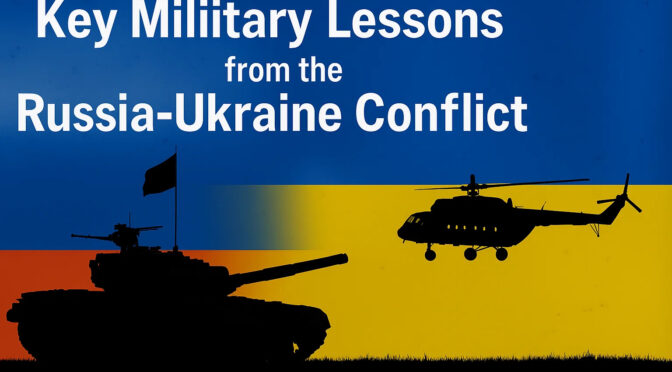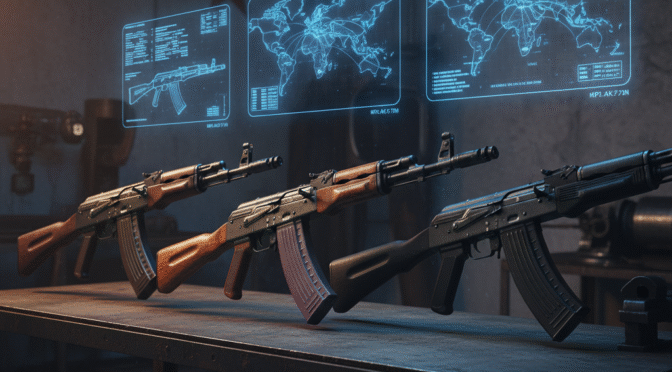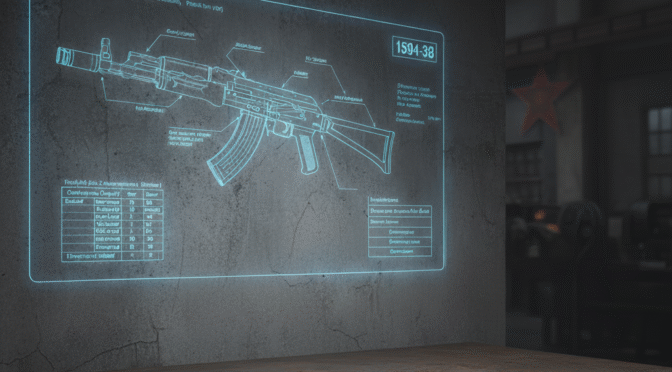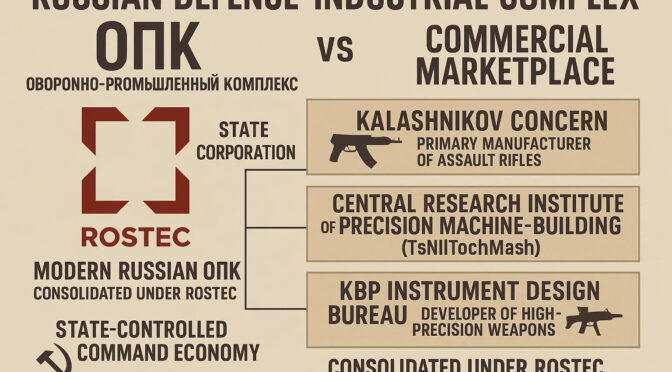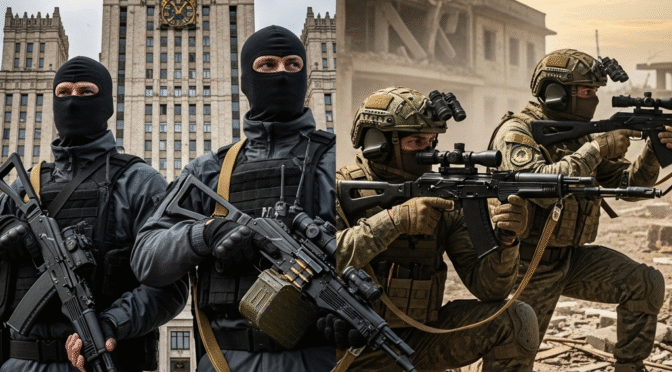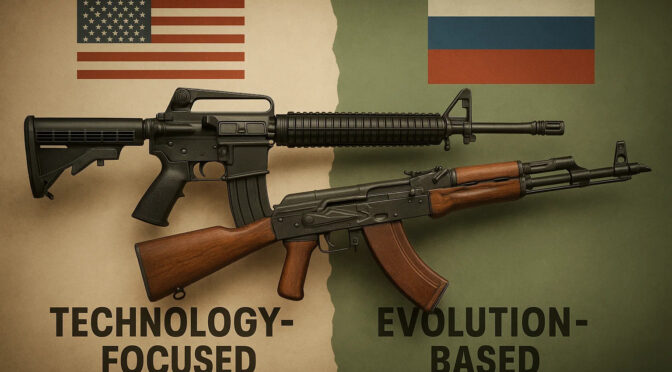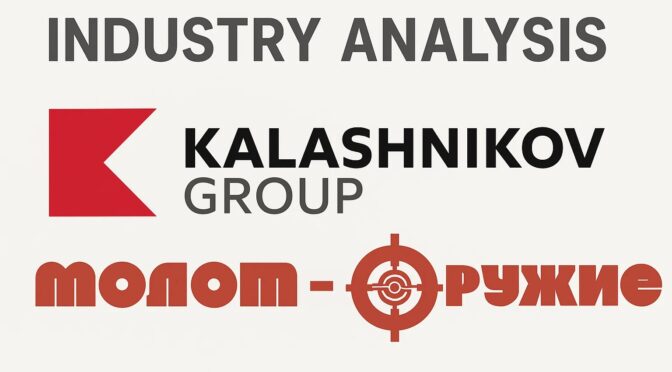The full-scale Russian invasion of Ukraine in February 2022 marks the first peer-level, industrial-scale war of the 21st century, fundamentally reshaping the global understanding of modern combat. It has served as a brutal corrective to two decades of Western military focus on counter-insurgency and limited interventions, reintroducing the grim realities of large-scale combat operations (LSCO). This conflict, characterized by staggering attrition and a dynamic interplay of old and new technologies, provides an invaluable, if tragic, laboratory for the future of warfare. This report offers a comprehensive military analysis of the key lessons learned thus far, structured through the analytical framework of People, Process, and Technology.
The most critical lessons are stark. Across the People domain, the war has reaffirmed the primacy of the human element. The “will to fight,” leadership quality, and the institutional strength of a professional Non-Commissioned Officer (NCO) corps have proven more decisive than pre-war calculations of material strength. Russia’s initial strategic failures were rooted in a catastrophic underestimation of Ukrainian resolve and a flawed, top-down command culture that stifled initiative. Conversely, Ukrainian resilience, bolstered by a more adaptive command philosophy, proved to be a decisive asymmetric advantage.
In the Process domain, the conflict signals the definitive return of industrial-scale attrition. The initial Russian plan for a swift, maneuver-based victory collapsed, giving way to a grinding war of exhaustion. This has exposed the profound inadequacy of Western defense industrial bases, which are optimized for peacetime efficiency rather than the mass production of munitions and equipment required for a protracted peer conflict. The battlefield itself has become a hyper-lethal, fortified landscape where the defender holds a significant advantage, making large-scale offensive operations immensely costly and difficult.
Finally, the Technology domain has witnessed both revolutionary change and the reinforcement of timeless principles. The proliferation of inexpensive drones and the transparency afforded by commercial space assets have created a “transparent battlefield” where concealment is nearly impossible and massed forces are exceptionally vulnerable. The electromagnetic spectrum has emerged as a primary warfighting domain, where electronic warfare is not an ancillary capability but a prerequisite for survival. This technological shift has created a new class of “attritable” systems, challenging the dominance of expensive legacy platforms and forcing a re-evaluation of force design and risk calculus.
The primary takeaway from this conflict is that success in future LSCO will depend on a nation’s ability to synthesize three critical elements: the industrial mass required to sustain a long war, the advanced technology needed to compete on a transparent and networked battlefield, and a military culture of rapid adaptation. Underpinning all of this is the necessity of a resilient industrial base and the national will to endure a long, hard fight. The lessons from Ukraine are a stark warning against assumptions of short, decisive wars and a call for a fundamental re-examination of Western military doctrine, force structure, and industrial preparedness.
Introduction: The Return of Great Power Conflict
The war in Ukraine is not an anomaly. It is a violent reintroduction to the enduring nature of war as described by the Prussian theorist Carl von Clausewitz: a domain governed by friction, chance, hostility, and political will.1 For a generation of military and political leaders shaped by the post-Cold War era, the conflict has shattered the illusion that major state-on-state warfare was a relic of the past. The sheer scale of the fighting, the staggering casualty rates, and the reversion to trench warfare have provided a sobering reminder that technology changes the character of war, but not its fundamental nature.3
This analysis proceeds from a position of profound respect for the human tragedy unfolding. The disastrous cost in lives, infrastructure, and treasure is the necessary context for any military assessment.3 It is precisely because the stakes are so high that a sober, fact-based examination of the military lessons is imperative. Failure to learn from the real-time example in Eastern Ukraine could result in a needless loss of blood and treasure in a future conflict.6
To dissect the complex interplay of factors that have defined this war, this report utilizes an analytical framework structured around three core domains:
- People: Examining the human dimension of the conflict, including leadership, morale, training, force generation, and the intangible “will to fight.”
- Process: Analyzing the operational and strategic art of the war, including planning, doctrine, logistics, industrial capacity, and the shift from maneuver to attrition.
- Technology: Assessing the impact of new and existing technologies, from drones and space-based assets to electronic warfare and precision munitions, on the character of modern combat.
By examining the war through this lens, we can identify the critical mistakes, key improvements, and durable lessons that will shape the preparation for, and conduct of, future large-scale conflicts.
I. The Human Domain: Will, Skill, and Mass
Despite the proliferation of advanced technology, the war in Ukraine has unequivocally reaffirmed that war is, and always will be, a human endeavor.3 The conflict’s trajectory has been shaped more by the quality of leadership, the resilience of soldiers, the effectiveness of training, and a nation’s ability to mobilize its population than by any single piece of hardware. The initial phases of the war, in particular, were a stark demonstration that the moral and conceptual components of fighting power can overcome material deficits.
I.A. Leadership and Command Culture: Centralization vs. Adaptation
The starkest contrast between the two belligerents has been in their command philosophies. Russia entered the war with a rigid, centralized command structure inherited from its Soviet past, while Ukraine has benefited from a more flexible, decentralized approach fostered since 2014.7
Russia’s initial invasion plan was a catastrophic failure born of this rigid culture. The concept of a swift coup de main was predicated on flawed intelligence and the hubristic assumption that the Ukrainian state was fragile and would quickly collapse.7 The command and control (C2) system designed to execute this plan proved brittle, slow, and incapable of adapting to unexpected resistance. Russian C2 nodes were often static for long periods, unable to operate effectively on the move, which rendered them exceptionally vulnerable to Ukrainian intelligence and precision strikes.9 This led to a systematic and relentless assault on Russian command posts across all tactical echelons, resulting in an unprecedented rate of attrition among senior and mid-level officers, which further degraded C2 and paralyzed decision-making.9 This systemic dysfunction was exacerbated by a deep-seated culture of bureaucratic sycophancy and corruption. Subordinates, fearful of reprisal, were unwilling to report bad news up the chain of command, creating a profound disconnect between President Putin’s strategic assumptions and the grim reality on the battlefield.7
In contrast, Ukraine’s armed forces have been on a journey of transformation since 2014, moving away from their own Soviet legacy and toward a Western-style model of mission command.11 This philosophy emphasizes decentralized execution, empowering junior leaders to exercise initiative and adapt to rapidly changing tactical situations. While the adoption of this culture is incomplete—Ukraine has struggled to scale mission command effectively due to a shortage of well-trained staff officers at the battalion and brigade levels, often leading to a reversion to more centralized control under the immense pressure of LSCO—its influence has been undeniable.11 The tactical initiative and flexibility demonstrated by Ukrainian units were key factors in the successful defense of Kyiv in 2022 and the stunningly effective Kharkiv counteroffensive later that year.8
The performance gap between the two forces reveals a fundamental truth: the “Westernization” of a military is less about acquiring advanced equipment and more about adopting a different philosophy of command and empowerment. This cultural “software” is more decisive than the “hardware” it employs. For nations engaged in military assistance and partnership building, this implies that training focused on mission command, NCO development, and decentralized decision-making is likely to provide a greater return on investment than simply providing high-end platforms. The people and processes of a military enable its technology to be effective, not the other way around.
To provide a foundational context for these differences, the following table distills the core philosophical and structural attributes of the belligerents compared to the idealized NATO standard. It moves beyond simple equipment counts to the cultural and doctrinal DNA of the armies, explaining the why behind many of the successes and failures observed.
| Attribute | Russian Federation (Adapted Soviet Model) | Ukrainian Armed Forces (Hybrid/Transitioning Model) | NATO Standard (Ideal) |
| Command Philosophy | Centralized, Top-Down Control 7 | Hybrid: Aspiring to Mission Command, often centralized at operational level 11 | Mission Command (Decentralized Execution) 14 |
| NCO Role | Enforcer/Specialist; limited leadership initiative 14 | Growing leadership role, but corps not fully developed 12 | Backbone of the force; empowered tactical leaders 14 |
| Logistics System | “Push” system (centralized allocation) 15 | Hybrid; adapting to “pull” system with Western aid 15 | “Pull” system (demand-based) 15 |
| Force Generation | Mass Conscription/Mobilization 14 | Professional core with mass mobilization 12 | Professional All-Volunteer Force (with reserve components) |
| Combined Arms | Doctrinally central but poorly executed 7 | Improving through experience and Western training 11 | Core competency; highly synchronized 11 |
I.B. Force Generation in Attritional Warfare: Relearning the Art of Mass
The failure of Russia’s initial maneuver-based strategy forced both sides into a protracted war of attrition, a mode of conflict for which most Western militaries are institutionally and industrially unprepared.14 In attritional warfare, victory is determined not by tactical brilliance or operational maneuver, but by a state’s ability to replace its losses in personnel and materiel and generate new formations more effectively than its adversary.14 The conflict becomes a contest of national resilience and industrial capacity.
This reality suggests that the most effective force structure for a protracted, high-intensity conflict is a hybrid model. This model combines a medium-sized, highly professional pre-war army with a large mass of draftees or reservists available for mobilization.14 In this construct, the professional forces act as a “fire brigade,” deployed to critical sectors to stabilize the front or conduct decisive offensive actions. Meanwhile, the newly mobilized, lower-end formations hold the line in secondary sectors, gaining invaluable combat experience over time and gradually increasing their quality.14 Victory is ultimately achieved by forging the highest quality low-end formations possible.
The war has provided several hard-learned principles for this process of force generation in an attritional environment 14:
- Adequate Training Time: New formations, even if manned by reservists with prior individual training, require a minimum of six months of collective training before being committed to combat. Conscripts require even longer.
- Preservation of Experience: Experience is a priceless and finite resource. To preserve it, combat formations should not be allowed to fall below 70% of their authorized strength. Withdrawing units from the line early allows combat veterans to integrate with and train new replacements, proliferating skills throughout the force. Allowing a unit to be attrited to destruction means its collective experience is lost forever.
- Prioritizing Replacements: It is more effective to prioritize sending individual replacements to bring experienced units back up to strength than it is to create entirely new, green formations from scratch.
- Strategic Misallocation of Experience: Ukraine’s 2023 summer counteroffensive was significantly hampered by a failure to adhere to these principles. Experienced, combat-proven brigades were used to hold the static front line, while the main breakthrough effort was assigned to newly raised brigades that, despite being equipped with Western hardware, lacked the requisite combat experience to execute complex combined arms operations under intense fire.16
The conflict reveals a fundamental tension for modern militaries between the quality needed for complex combined arms operations (empowered NCOs, mission command) and the quantity required to endure protracted attritional warfare (mass mobilization). A key lesson is that a military cannot “surge” a high-quality command culture or an experienced NCO corps in a crisis. These are the products of decades of deliberate, sustained institutional investment. This presents a critical vulnerability for Western militaries, whose qualitative edge in personnel is a “wasting asset” in a long war. A doctrine that relies heavily on a small cadre of exquisitely trained professionals may prove brittle when confronted with the casualty rates seen in Ukraine, forcing a difficult re-evaluation of mobilization plans, reserve component training, and the balance between an all-volunteer force and some form of national service.
I.C. Training, Doctrine, and the NCO Corps: The Widening Gulf
One of the most significant, yet often overlooked, differentiators between the Russian and Ukrainian forces is the role and quality of their respective NCO corps. Modern NATO doctrine is fundamentally dependent on a corps of professional, empowered, and highly trained NCOs who serve as the backbone of small-unit leadership.14 These leaders are responsible for translating officers’ intent into tactical action, maintaining discipline, and training soldiers. Such a corps takes years, if not decades, to build and is exceptionally difficult to replace at scale in a high-attrition environment.14
The Russian military, despite numerous reform efforts since the 2008 Georgia War, largely retains a Soviet-era model where the NCO is a junior specialist or enforcer with minimal leadership authority or initiative.14 This systemic weakness has manifested in poor small-unit tactics, a lack of discipline, and an inability to adapt on the battlefield.
Ukraine, by contrast, has been working with NATO partners since 2014 to build a professional NCO corps modeled on Western standards. While this effort has yielded significant improvements, the corps is not yet fully developed or scaled across the entire armed forces.12 This has created inconsistencies in performance and presents ongoing challenges in executing complex operations that require a high degree of small-unit cohesion and leadership.
The war has repeatedly and brutally demonstrated that competency matters as much as, if not more than, technology.17 Tactical proficiency, sound operational planning, coherent strategy, and the leadership to execute them are often more decisive than a marginal advantage in equipment. These intangible human factors are also the most difficult to accurately assess in peacetime, meaning military analysts must develop better techniques for measuring them before a conflict begins.17
I.D. The Will to Fight: Miscalculations and the Moral Component
Perhaps the most profound strategic failure of the Russian campaign was its gross underestimation of Ukrainian national will and the corresponding overestimation of its own troops’ morale.3 This was not a failure unique to Moscow; U.S. and Western intelligence assessments in the lead-up to the invasion also widely predicted a swift Ukrainian collapse, demonstrating a collective failure to properly assess the moral component of fighting power.3
War remains, at its core, a Clausewitzian contest of opposing and irreconcilable wills.3 It is fundamentally about people, their motivations, their belief in their cause, and their resilience under the extreme physical and psychological pressures of combat. This moral dimension proved decisive in the early days of the war, enabling outnumbered and outgunned Ukrainian defenders to halt the Russian advance on Kyiv, and it continues to be a critical factor in the ongoing struggle.13
The Russian military leadership has demonstrated a callous disregard for the lives of its soldiers, treating its infantry as an expendable resource to be thrown into frontal assaults.18 This approach has resulted in staggering casualties. By some estimates, Russia will likely hit the grim milestone of 1 million casualties (killed and wounded) by the summer of 2025.5 Such losses, while reflecting a high tolerance for attrition, are corrosive to morale and long-term combat effectiveness.
II. The Operational Domain: Process, Planning, and Protraction
The operational level of war—the domain of campaigns and major operations—has been a theater of profound miscalculation, painful adaptation, and the rediscovery of hard-won historical lessons. Russia’s failure to achieve its initial strategic objectives forced a reversion to a brutal, attritional form of warfare that has tested the logistical and industrial limits of both sides and their international partners.
II.A. Strategic Miscalculation: The Failure of the Initial “Special Military Operation”
Russia’s invasion plan in February 2022 was predicated on a series of catastrophic intelligence and strategic failures. The Kremlin leadership fundamentally misunderstood the political and social reality of Ukraine, assuming the population was passively awaiting “liberation” and that the government would crumble at the first show of force.7 This led to a deeply flawed operational concept: a rapid, multi-axis advance aimed at a swift decapitation of the Ukrainian government in Kyiv.13
The primary formation intended to execute this plan was the Battalion Tactical Group (BTG). However, the use of BTGs for rapid, deep offensive maneuvers was doctrinally unsound without first achieving air superiority and ensuring robust, protected logistical support.7 The result was the disastrous “race to Kyiv,” where long, unescorted Russian armored columns were channeled onto a few main roads, making them highly vulnerable to ambushes by mobile Ukrainian anti-tank teams and artillery strikes.20
Ukraine’s successful defense of its capital was a masterclass in asymmetric warfare. Ukrainian forces leveraged their local knowledge, the defensive advantages of urban terrain, and tactical initiative to disrupt, delay, and ultimately defeat a numerically and technologically superior invader.13 They effectively targeted Russia’s vulnerable logistics and command structure, turning the invaders’ planned lightning strike into a logistical and operational quagmire.
II.B. The Attritional Stalemate: The Primacy of Fires and Fortifications
With the failure of its initial maneuver-based campaign, the conflict devolved into a grinding war of attrition, particularly in the Donbas and southern Ukraine. This phase of the war has been characterized by the return of extensive, World War I-style trench networks, heavy reliance on massed artillery fire, and largely static front lines.3
This attritional form of warfare operates on a different logic than a war of maneuver. The primary objective is not the seizure of territory for its own sake, but rather the systematic destruction of the enemy’s personnel and equipment at a favorable exchange ratio.14 It is a contest of industrial output and demographic endurance, a war ultimately won by the economies and societies that can sustain the generation of combat power over a prolonged period.14
In this environment, defensive engineering has become a critical, war-winning capability. Russian forces, drawing on deep-rooted Soviet doctrine, have proven highly proficient in constructing complex, multi-layered defensive belts.6 These defenses typically consist of two to three lines of trenches, infantry fighting positions, and extensive, intricately designed minefields, all covered by pre-planned artillery fires. This is one of the few areas where the Russian military has performed largely according to its Cold War-era doctrine and has done so with considerable effect.6
II.C. The Challenge of the Offensive: Breaching Modern Defenses in Depth
The immense difficulty of conducting successful offensive operations against a prepared, modern defense is one of the most significant lessons of the war. The Ukrainian summer counteroffensive of 2023 provides a stark case study in the modern defender’s advantage.16
The original Ukrainian concept of operations was doctrinally sound: a concentrated armored and mechanized thrust on a narrow 30-kilometer front, designed to achieve a rapid breakthrough, isolate the key logistical hub of Tokmak within a week, and then exploit the success by advancing south towards Melitopol.16 The plan relied on tempo to prevent Russia from bringing the bulk of its reserves to bear. However, this concept was not implemented as planned, due to a combination of Ukrainian and partner errors.16
The offensive ultimately failed to achieve its strategic objectives for several key reasons:
- Inadequate Enablers: Ukraine and its international partners failed to assemble the doctrinal minimum of critical enabling assets required for a successful combined arms breach. This included a severe lack of air superiority, insufficient numbers of engineering and mine-clearing vehicles, and inadequate stockpiles of artillery ammunition.16
- Inexperienced Assault Forces: As previously noted, the main assault brigades were largely newly raised formations. While equipped with Western tanks and infantry fighting vehicles, they lacked the deep, collective combat experience necessary to execute highly complex and dangerous breach operations under constant enemy fire, leading to tactical errors and high initial equipment losses.16
- Loss of Operational Security: The offensive was one of the most widely anticipated military operations in recent history. Poor operational security meant that Russia knew precisely where and approximately when the main effort would take place, allowing it to prepare its defenses and concentrate its reserves accordingly.16
- Density and Sophistication of Obstacles: Russian engineers created obstacle belts of unprecedented density and depth. These belts, often ranging up to 1,000 meters deep and sometimes much more, were interlaced with multiple types of anti-tank and anti-personnel mines, often rigged with anti-tampering devices.6 Russian engineers also adapted their tactics in real-time, for example, by “double-stacking” anti-tank mines to more quickly disable and destroy Ukrainian mine-clearing equipment.6
The modern battlefield, as demonstrated in Ukraine, has become a “defender’s paradise.” The combination of persistent intelligence, surveillance, and reconnaissance (ISR) from drones and satellites, long-range precision fires, and sophisticated, deep obstacle belts has dramatically shifted the cost-ratio of offense to defense. An attacker must now expend a disproportionate amount of resources and accept immense attrition for even minor territorial gains. The traditional military planning assumption of a 3:1 attacker-to-defender ratio for a successful breach may now be a gross underestimate. The true ratio could be significantly higher, or perhaps the concept itself is becoming irrelevant if the attacker cannot first achieve dominance in the information and fires domains to blind and suppress the defender before the assault begins. This has profound implications for future force sizing, equipment procurement, and operational planning for any military, including that of the United States, which may have a massive shortfall in the bridging and breaching resources required for such an operation.6
II.D. Logistics and the Industrial Engine of War: The Decisive Rear Battle
The conflict has served as a brutal reminder of the old military axiom that amateurs talk strategy while professionals talk logistics. The war has been defined by staggering rates of ammunition consumption, particularly for artillery, that have dwarfed all pre-war planning assumptions and exposed the systemic fragility of Western stockpiles and defense production capacity.7
A central lesson of this war is that victory in a protracted LSCO is impossible without a robust, scalable, and resilient defense industrial base (DIB). Russia, recognizing the conflict would be a long one, began transitioning to a war economy as early as May 2022, placing its industry on a footing to sustain a multi-year effort.16 In contrast, Ukraine’s international partners were slow to recognize the industrial demands of the conflict and to take the necessary steps to ramp up their own production lines, creating critical shortages of key munitions at pivotal moments.16
The conflict also validates the long-standing doctrinal need for a “high-low” mix of military equipment.14 Expensive, technologically sophisticated “high-end” systems like advanced fighter jets and precision missiles are crucial for achieving specific effects, but they are difficult and time-consuming to manufacture and cannot be produced in the sheer numbers required for a war of attrition. Mass, which is a quality of its own, is achieved with cheaper, simpler, and more easily manufactured “low-end” weapons and munitions.14
Furthermore, the transparency of the battlefield has made logistics a contested domain. Once offensive operations are committed, ground lines of communication (GLOCs) become predictable and highly targetable by enemy long-range precision fires and drone attacks.16 This ability to strike deep into an opponent’s operational rear collapses the tempo of operations and makes sustaining an advance incredibly difficult.
This reality signals the probable end of the “short, sharp war” paradigm that has dominated Western military thinking since the end of the Cold War. Future peer conflicts are likely to be protracted, industrial-scale wars of attrition. This elevates a nation’s DIB and its ability to mobilize its economy from a supporting element of military strategy to the strategic center of gravity. National security strategy must now be inextricably linked with a robust industrial policy focused on creating peacetime excess capacity, securing supply chains for critical components, and maintaining a skilled manufacturing workforce. A nation without the ability to mass-produce basic munitions and equipment cannot sustain a high-intensity fight, regardless of how technologically advanced its frontline forces may be at the outset.
III. The Technological Domain: Disruption, Transparency, and Contestation
The war in Ukraine has been a crucible for military technology, accelerating innovation cycles and providing a real-world testbed for new systems and concepts. It has demonstrated how technology can both revolutionize battlefield dynamics and, paradoxically, reinforce timeless principles of warfare. The modern battlefield has become transparent and hyper-lethal, the electromagnetic spectrum has solidified its status as a primary warfighting domain, and new, cheaper technologies are fundamentally challenging the dominance of expensive, legacy platforms.
III.A. The Ubiquitous Drone: Revolutionizing the Tactical and Operational Levels
The single most transformative technology of the conflict has been the proliferation of cheap, effective, and versatile Unmanned Aircraft Systems (UAS). Combined with the widespread availability of commercial satellite imagery, drones have rendered the battlefield almost completely transparent, making traditional concepts of surprise and concealment incredibly difficult to achieve.3 Any force that masses or breaks cover is likely to be seen and targeted within minutes.
This has led to a “democratization of airpower.” Small, inexpensive First-Person-View (FPV) drones, often assembled by soldiers and volunteers from commercially available parts, have become a primary means of reconnaissance, artillery spotting, and direct attack.7 These “kamikaze” drones have given small infantry units a persistent, organic precision-strike capability that was previously the exclusive domain of air forces or specialized artillery units, and at a fraction of the cost.18
This represents a profound asymmetric threat. A drone costing a few thousand dollars can locate and destroy a multi-million dollar main battle tank, air defense system, or artillery piece.7 This dynamic has forced a radical re-evaluation of the survivability and cost-effectiveness of expensive legacy platforms, which were designed for a less transparent battlefield.21
Crucially, the cycle of technological innovation and tactical adaptation in drone warfare is occurring at a blistering pace. Ukrainian forces report updating drone software nightly and making hardware changes every few weeks based on direct feedback from the front lines.23 This rapid, bottom-up innovation cycle is orders of magnitude faster than the traditional, top-down military acquisition processes of Western nations, presenting a significant challenge for maintaining a technological edge.23
III.B. The Electronic Battlefield: The Contest for the Spectrum
The proliferation of drones, sensors, and networked communications has made Electronic Warfare (EW) a central and indispensable component of modern combat. The fight for control of the electromagnetic spectrum is no longer an ancillary activity; it is a core competency essential for survival and success.24 EW is critical for jamming enemy drones to disrupt their command links and navigation, for interfering with enemy communications to degrade their C2, and for protecting friendly forces from detection and targeting.
EW has also become a decisive factor in the duel between precision munitions and their targets. Russia, after initially struggling, has successfully adapted its EW capabilities to degrade the accuracy of GPS-guided munitions supplied to Ukraine, including GMLRS rockets and Excalibur artillery shells.16 This demonstrates that even significant technological advantages can be fleeting and are subject to the continuous development of effective countermeasures. The reliance of modern military forces on the electromagnetic spectrum for C2, ISR, and precision strike makes them inherently vulnerable to jamming and interference. This underscores the need for future systems to be agile, software-defined, and resilient, with the ability to operate in a degraded or denied spectrum environment.16
III.C. Fires and Counter-Fires: The Evolving Duel of Precision and Mass
At its heart, the conflict in Ukraine is an artillery war.21 Massed artillery fire remains the primary cause of casualties and destruction on the battlefield. The war has been a contest between the precision of Western-supplied systems and the sheer mass of Russian artillery.
The introduction of Western Long-Range Precision Fires (LRPF) systems, most notably the M142 High Mobility Artillery Rocket System (HIMARS), had a significant operational impact early on. These systems allowed Ukraine to strike high-value Russian targets—such as command posts, ammunition depots, and logistical hubs—deep in the operational rear, disrupting Russian operations and degrading their combat capability.9
However, no single system is a “wonder weapon.” The Russian military adapted to the HIMARS threat by dispersing its logistics into smaller, more numerous depots, hardening its command posts, and improving its EW capabilities to interfere with the GPS guidance of the rockets.16 This adaptation reduced, though did not eliminate, the effectiveness of these systems over time, highlighting the constant cat-and-mouse game of measure and countermeasure that defines modern warfare.
In a more recent adaptation, Russia has evolved its aerial campaign into a “new salvo war.” This strategy involves launching massed, combined salvos of cruise missiles, ballistic missiles, and one-way attack drones—sometimes exceeding 700 munitions in a single strike—to overwhelm Ukrainian air defenses through sheer volume and complexity.19 This approach underscores the critical importance of deep magazines of interceptor missiles and the need for more cost-effective air defense solutions to counter the threat of cheap but numerous drones.
III.D. The High Ground: The Unprecedented Role of Space and Cyber Assets
The conflict has unequivocally demonstrated that space is a critical warfighting domain.25 The war has seen the unprecedented integration of space-based services—including satellite communications (SATCOM), positioning, navigation, and timing (PNT) from systems like GPS, and satellite-based ISR—into tactical and operational planning.
A truly game-changing development has been the decisive role of commercial space capabilities. Ukraine’s ability to leverage Western commercial space assets has been a significant force multiplier, allowing it to offset Russia’s considerable advantages in national military space capabilities.25 The provision of the Starlink satellite internet service provided resilient battlefield communications when terrestrial networks were destroyed or jammed. Likewise, access to high-resolution commercial satellite imagery provided Ukrainian forces with invaluable intelligence on Russian force dispositions and movements.
However, these space assets are not invulnerable. The war began with a major Russian cyberattack against the Viasat satellite network, which disrupted Ukrainian military communications in the opening hours of the invasion.23 GPS jamming by Russian EW systems is a constant feature of the conflict, affecting everything from drone navigation to the accuracy of guided munitions.26 This highlights the vulnerability of relying on a small number of exquisite satellites and reinforces the need for more resilient, proliferated satellite architectures that are harder to disrupt or destroy. Cyber warfare has been a constant, integrated feature of the conflict, with attacks targeting military, government, and critical infrastructure on both sides, confirming that cyber operations are now an integral part of modern combined arms warfare.24
The conflict has introduced a new category of military asset that sits between “expendable” (like a bullet) and “survivable” (like a fighter jet): the “attritable” system.18 These are platforms like FPV drones or unmanned surface vehicles that are inexpensive enough to be lost in large numbers to achieve tactical effects, yet sophisticated enough to have an operational impact. This fundamentally changes the risk calculus for commanders. They can accept risks with these systems—such as one-way reconnaissance or saturation attacks—that would be unthinkable with a manned aircraft or a main battle tank. Future force design and acquisition must account for this new category. Militaries will need to invest not just in exquisite, survivable platforms, but also in a vast number of cheap, effective, and attritable systems that can provide mass, saturate enemy defenses, and impose disproportionate costs on an adversary.
III.E. The Underperformance of “Classical” Air and Sea Power
One of the greatest surprises of the war has been the striking underperformance of Russia’s conventional air and sea power, which were widely expected to dominate their respective domains.
Despite possessing one of the world’s largest and most modern air forces, the Russian Air Force (VKS) failed to achieve air superiority over Ukraine in the opening days of the war, and has been unable to do so since.21 This failure can be attributed to a combination of poor planning, ineffective Suppression of Enemy Air Defenses (SEAD) operations, a lack of precision-guided munitions, and the surprising resilience and tactical ingenuity of Ukraine’s mobile, layered air defense network.21 The inability of either side to establish control of the air has resulted in a mutually denied airspace. This has forced both air forces to operate cautiously, often at low altitudes and for limited periods over the front lines, severely limiting their effectiveness and contributing to the attritional stalemate on the ground.21
In the maritime domain, the war has been a showcase for asymmetric naval warfare. Ukraine, despite having virtually no functional navy at the start of the full-scale invasion, has successfully challenged the dominance of the Russian Black Sea Fleet. It has sunk numerous vessels, including the fleet’s flagship, the cruiser Moskva, and forced the remainder of the fleet to retreat from the northwestern Black Sea, effectively reopening a maritime corridor for grain exports.23 This remarkable achievement was accomplished through the innovative and integrated use of land-based anti-ship cruise missiles and, critically, domestically produced unmanned surface vehicles (USVs) used in “kamikaze” attacks.23 This demonstrates that smaller powers can effectively achieve sea denial against larger, more powerful navies by leveraging asymmetric, low-cost, and unmanned technologies.
The paradox of the “transparent battlefield” is that it dramatically increases the importance of old-fashioned, fundamental military skills. In an environment where everything can be seen by a vast array of sensors, the most effective weapon is to not be seen at all. This has led to a renaissance of techniques like camouflage, concealment, deception, and dispersal.3 Massed forces are quickly identified and destroyed.6 Survival depends on hiding. This is a reversion to pre-digital age tactics, but now supercharged by the hyper-lethality of the systems that will find and destroy you if you fail. Future military training must re-emphasize “fieldcraft” and active signature management (thermal, electronic, and physical) as core survival skills. Investment in advanced camouflage systems, realistic decoys, and strict emission control (EMCON) techniques may provide a higher survivability payoff than simply adding more armor to a vehicle.
IV. Synthesis and Key Military Lessons for Future Conflict
The Russia-Ukraine conflict provides a comprehensive, if brutal, dataset on the character of modern large-scale warfare. Synthesizing the lessons from the human, operational, and technological domains reveals a series of cross-cutting implications that should inform the doctrine, force structure, and strategic posture of Western militaries for decades to come.
IV.A. Key Russian Failures and Adaptations
Russia’s military performance has been a story of profound initial failure followed by a grinding, costly, but undeniable adaptation.
- Initial Failures: The campaign was launched on a foundation of hubristic strategic planning and catastrophic intelligence failures regarding Ukraine’s will and ability to resist.7 This was compounded by a brittle, centralized C2 system that could not adapt to battlefield realities, woefully inadequate logistics, a systemic failure to conduct effective combined arms operations, and the inability of its vaunted air force to achieve air superiority.7
- Subsequent Adaptations: Faced with the collapse of its initial plan, Russia adapted. It shifted from a flawed maneuver strategy to a brutal, grinding attritional strategy that played to its strengths in mass and a high tolerance for casualties.14 Its forces have excelled in defensive engineering, creating formidable obstacles that have proven exceptionally difficult to breach.6 They have improved their EW capabilities to counter Western precision munitions and have successfully mobilized their DIB and society for a long war, demonstrating a strategic resilience that many in the West underestimated.16
IV.B. Key Ukrainian Successes and Shortcomings
Ukraine’s defense has been a testament to national will and tactical ingenuity, but it has also revealed the inherent vulnerabilities of a smaller state reliant on external support.
- Successes: The primary Ukrainian success has been its unbreakable national will and societal resilience.3 This has been translated into military effectiveness through tactical ingenuity and a culture of rapid, bottom-up adaptation. Ukrainian forces have demonstrated a remarkable ability to effectively integrate and employ Western-supplied systems, particularly LRPF, and have pioneered the use of commercial technology, such as drones and commercial space assets, for military effect.23 Their success in asymmetric naval warfare against the Black Sea Fleet is a textbook example of this innovative spirit.23
- Shortcomings: Ukraine continues to face significant challenges. It has struggled to fully scale a Western-style mission command philosophy across its rapidly expanded forces.11 It critically lacks the organic resources—particularly airpower, engineering assets, and a deep industrial base—to conduct sustained, large-scale offensive operations against prepared Russian defenses.16 This leads to a heavy and potentially precarious dependence on the political will and industrial capacity of its international partners. Finally, like Russia, it is suffering from the high attrition of its most experienced personnel, a loss that will be difficult to replace.12
IV.C. Cross-Cutting Implications for Western Militaries
The lessons from Ukraine are not just for the belligerents; they are a stark warning for all modern militaries, particularly those in the West that have been optimized for a different kind of warfare.
- The Industrial Base is a Strategic Weapon: The DIB can no longer be considered a secondary, background concern. It is a primary determinant of strategic success in any protracted conflict. The ability to mass-produce munitions, drones, and replacement equipment is a core component of national power. Peacetime industrial policies and stockpile levels across NATO require an urgent and fundamental re-evaluation.14
- Mass is a Quality of Its Own: For two decades, Western military thought has prioritized quality over quantity, resulting in smaller, highly professional, and technologically advanced forces. This conflict demonstrates that such forces, while potent, may be insufficient to absorb the attrition of LSCO and hold ground over vast fronts. Force structures, mobilization doctrines, and the balance between professional and reserve components need to be reviewed to ensure sufficient mass for a high-intensity fight.14
- The Primacy of Counter-ISR and EW: On the transparent battlefield, the prerequisite for any successful operation, whether offensive or defensive, is the ability to win the counter-reconnaissance fight. Denying the enemy the ability to see and target you, while maintaining your own situational awareness, is paramount. This elevates EW and signature management from supporting roles to a central, decisive effort.16
- Doctrine is Not Dogma: The war has shown that no pre-war doctrine perfectly anticipated the character of this conflict. Both Russian and Ukrainian forces have had to adapt or suffer the consequences. The most critical institutional attribute for a modern military is the ability to learn and adapt faster than the enemy.3 While NATO’s operational-level doctrine may be sound in principle, the alliance’s ability to resource and implement it over the course of a long, attritional war is a serious and open question.4
Conclusion: Preparing for the Next War
The war in Ukraine has been a brutal, clarifying event. It has stripped away assumptions and illusions about the nature of modern warfare, revealing a future that is a complex and lethal hybrid of industrial-age mass and information-age precision. It is a future where the battlefield is transparent, the electromagnetic spectrum is a contested battlespace, and attritional capacity is as important as maneuver skill.
The conflict serves as a stark and unequivocal warning against the persistent Western predilection for assuming future wars will be short, sharp, and decisive. It demands a return to the first principles of military science: the foundational importance of logistics, the unglamorous but essential role of industrial capacity, the grim necessity of mass, and, above all, the indomitable power of the human will to fight.
The most crucial preparation for the next war is therefore not merely the acquisition of new technology or the refinement of existing doctrine. It is the fostering of an institutional culture—across government, industry, and the military—that is intellectually humble, ruthlessly self-critical, and institutionally agile. It requires building a national security enterprise that is resilient, adaptable, and psychologically prepared for a long, hard fight. The soldiers in the trenches of Ukraine have relearned these lessons in blood. The West must now learn them in time.
If you find this post useful, please share the link on Facebook, with your friends, etc. Your support is much appreciated and if you have any feedback, please email me at in**@*********ps.com. Please note that for links to other websites, we are only paid if there is an affiliate program such as Avantlink, Impact, Amazon and eBay and only if you purchase something. If you’d like to directly contribute towards our continued reporting, please visit our funding page.
Works cited
- MWI Podcast: Clausewitz and the War in Ukraine – Modern War Institute, accessed August 22, 2025, https://mwi.westpoint.edu/mwi-podcast-clausewitz-and-the-war-in-ukraine/
- RUSSIAN WAR AGAINST UKRAINE LESSONS LEARNED CURRICULUM GUIDE – NATO, accessed August 22, 2025, https://www.nato.int/nato_static_fl2014/assets/pdf/2023/12/pdf/231208-RusWar-Ukraine-Lessons-Curriculum.pdf
- Human Domain Lessons from Russia-Ukraine | Conflict in Focus – CSIS, accessed August 22, 2025, https://www.csis.org/analysis/human-domain-lessons-russia-ukraine-conflict-focus
- Russia’s War in Ukraine: Emerging Insights for UK and NATO Joint Doctrine – RAND, accessed August 22, 2025, https://www.rand.org/pubs/research_reports/RRA3400-1.html
- Russia’s Battlefield Woes in Ukraine – CSIS, accessed August 22, 2025, https://www.csis.org/analysis/russias-battlefield-woes-ukraine
- Engineer Lessons Learned From the War in Ukraine – Line of Departure, accessed August 22, 2025, https://www.lineofdeparture.army.mil/Journals/Engineer/July-24-Engineer/Lessons-Ukraine/
- Russia’s War in Ukraine: Misleading Doctrine and Misguided Strategy, accessed August 22, 2025, https://www.defense.gouv.fr/sites/default/files/dgris/Etude%20de%20fond%20n%C2%B01%20-%20Russia%E2%80%99s%20war%20in%20Ukraine.pdf
- Russias War in Ukraine – Marine Corps University, accessed August 22, 2025, https://www.usmcu.edu/Outreach/Marine-Corps-University-Press/MCU-Journal/JAMS-vol-14-no-2/Russias-War-in-Ukraine/
- The Russia-Ukraine Conflict Laboratory: Observations Informing IAMD, accessed August 22, 2025, https://www.armyupress.army.mil/Journals/Military-Review/English-Edition-Archives/March-2024/Russia-Ukraine-Conflict-Laboratory/
- Lessons learned from Ukraine Russia war : r/Military – Reddit, accessed August 22, 2025, https://www.reddit.com/r/Military/comments/192f9r5/lessons_learned_from_ukraine_russia_war/
- A Long, Hard Year: Russia-Ukraine War Lessons Learned 2023, accessed August 22, 2025, https://publications.armywarcollege.edu/News/Display/Article/3890256/a-long-hard-year-russia-ukraine-war-lessons-learned-2023/
- Ukrainian Military Performance and Outlook | Congress.gov, accessed August 22, 2025, https://www.congress.gov/crs-product/IF12150
- The Battle of Kyiv, Three Years On: An Urban Warfare Project Case Study, accessed August 22, 2025, https://mwi.westpoint.edu/the-battle-of-kyiv-three-years-on-an-urban-warfare-project-case-study/
- The Attritional Art of War: Lessons from the Russian War on Ukraine …, accessed August 22, 2025, https://rusi.org/explore-our-research/publications/commentary/attritional-art-war-lessons-russian-war-ukraine
- How has the change to and from western military doctrine affected Russian gains in Ukraine? : r/WarCollege – Reddit, accessed August 22, 2025, https://www.reddit.com/r/WarCollege/comments/1f92g7y/how_has_the_change_to_and_from_western_military/
- Preliminary Lessons from Ukraine’s Offensive Operations, 2022–23 – RUSI, accessed August 22, 2025, https://static.rusi.org/lessons-learned-ukraine-offensive-2022-23.pdf
- Dispersed, Disguised, and Degradable: The Implications of the Fighting in Ukraine for Future U.S.-Involved Conflicts – RAND, accessed August 22, 2025, https://www.rand.org/content/dam/rand/pubs/research_reports/RRA3100/RRA3141-2/RAND_RRA3141-2.pdf
- Air and Space Domain Lessons from Russia-Ukraine: Part One | Conflict in Focus – CSIS, accessed August 22, 2025, https://www.csis.org/analysis/air-and-space-domain-lessons-russia-ukraine-part-one-conflict-focus
- Ukraine War: Research & Analysis – CSIS, accessed August 22, 2025, https://www.csis.org/topics/ukraine-war
- The Russia-Ukraine War: It Takes a Land Force to Defeat a Land …, accessed August 22, 2025, https://www.armyupress.army.mil/journals/military-review/online-exclusive/2025-ole/russia-ukraine-war/
- The Military Lessons of the Russia-Ukraine War – OBSERVER RESEARCH FOUNDATION, accessed August 22, 2025, https://www.orfonline.org/public/uploads/posts/pdf/20240119104743.pdf
- Russian Offensive Campaign Assessment, August 14, 2025 | Institute for the Study of War, accessed August 22, 2025, https://understandingwar.org/backgrounder/russian-offensive-campaign-assessment-august-14-2025
- Conflict in Focus: Lessons from Russia-Ukraine – CSIS, accessed August 22, 2025, https://www.csis.org/analysis/conflict-focus-lessons-russia-ukraine
- Lessons from the Ukraine Conflict: Modern Warfare in the Age of Autonomy, Information, and Resilience – CSIS, accessed August 22, 2025, https://www.csis.org/analysis/lessons-ukraine-conflict-modern-warfare-age-autonomy-information-and-resilience
- Lessons from the War in Ukraine for Space: Challenges and Opportunities for Future Conflicts – RAND, accessed August 22, 2025, https://www.rand.org/content/dam/rand/pubs/research_reports/RRA2900/RRA2950-1/RAND_RRA2950-1.pdf
- Lessons from the War in Ukraine for Space – RAND, accessed August 22, 2025, https://www.rand.org/pubs/research_reports/RRA2950-1.html
- The Russo-Ukrainian War: A Strategic Assessment Two Years into the Conflict – AUSA, accessed August 22, 2025, https://www.ausa.org/publications/russo-ukrainian-war-strategic-assessment-two-years-conflict
